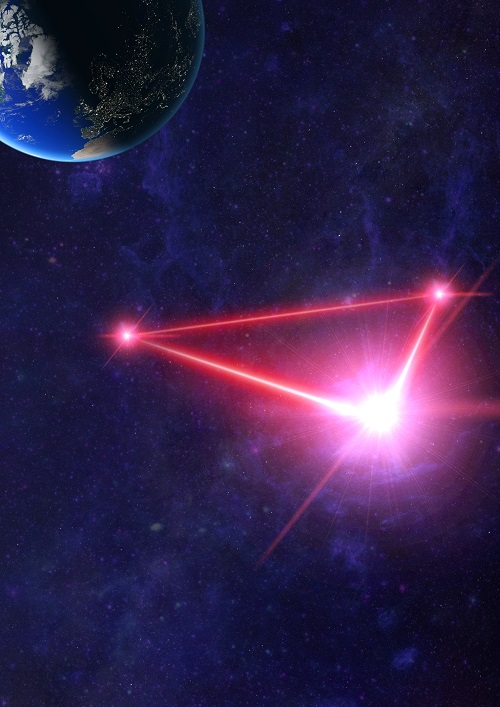
100 years ago, Albert Einstein predicted the existence of gravitational waves. In September 2015, they were first directly detected with the Advanced LIGO detectors in the USA – a milestone. Since then, the distortions of space-time have allowed completely new insights into the universe.
The planned Laser Interferometer Space Antenna LISA is the next big step in the exploration of gravitational waves. LISA is supposed to detect them via a space-based configuration, as opposed to an Earth-based one.
Fraunhofer EMI’s research mandate
Fraunhofer EMI has decades of experience in the research of impact events in space. The project MIRAD (Micro-particle Impact Related Attitude Disturbances) focuses on the momentum that a micrometeoroid exerts on a satellite during impact. In order for the LISA mission to achieve the desired measurement accuracy, the satellites must not disturb their enclosed, but free-floating test masses. This means that meteoroid impacts on the satellites must be compensated for, so that the satellites and test masses do not collide. So far, most research of impact events on spacecraft has concentrated on mechanical damage. The momentum that is transferred during impact events has not been investigated sufficiently. In order to determine the influence of such impacts on the sensitive attitude control of the LISA satellites, the fragments ejected uprange or against the impact direction are of great importance. For the characterization of these fragments, an optical tracking technique developed at EMI will be used that allows determining the size and velocity of the ejected fragments. For more information on this measurement technology, see page 65 of EMI’s Annual Report 2017/2018.
What are gravitational waves?
Comparable to objects producing ripples on the surface of water, massive objects moving in space distort space-time and produce gravitational waves. Gravitational waves have a very low frequency and wavelengths that are larger than the size of Earth. It is only possible to efficiently detect them from space.
What is LISA?
LISA consists of three spacecraft that form an equilateral triangle. The distance between the spacecraft shall be 2.5 million kilometers. LISA is supposed to detect gravitational waves by measuring the slight distance differences between free masses inside the satellites.
Astrophysicists can use this information to learn more about the sources of this unexplored wave spectrum range of gravitational waves.
International research consortium
An international research consortium cooperates within this challenging project. In January 2017, the LISA consortium has submitted a proposal for the Laser Interferometer Space Antenna (LISA).
DOWNLOAD the LISA proposal here.